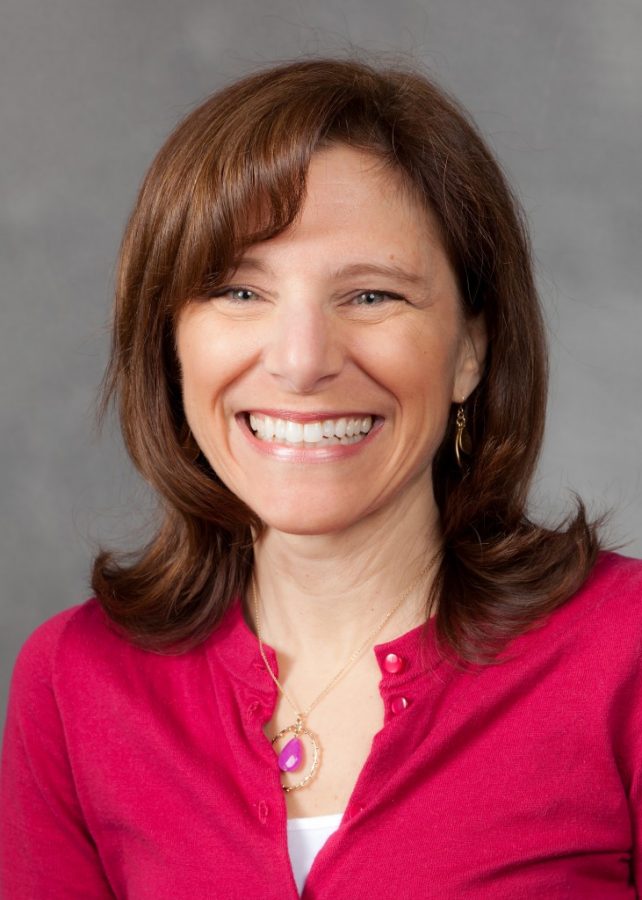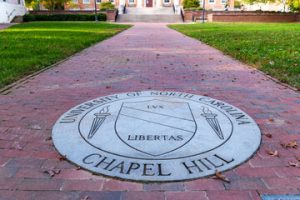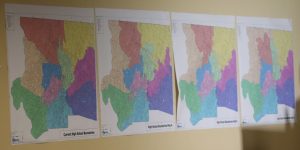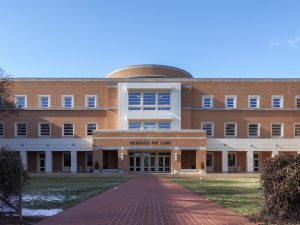Deacon Profile: Joanne Clinch
October 22, 2020
Dr. Clinch is the clinical director of Student Health Service (SHS). She has been involved in university efforts to develop and implement public health guidelines to mitigate the spread of COVID-19 this semester, as well as worked on initiatives to increase transparency about public health, like the university’s COVID-19 dashboard.
How have you been involved in the university’s response to COVID-19?
I began planning the university’s response with a team of faculty and staff in conjunction with guidance from our local and state public health officials and infectious disease consultants from Wake Forest Baptist Health in March of this year. My role on this team and to the leadership of the university was to provide up to date information from the Centers for Disease Control and Prevention (CDC), the North Carolina Department of Health and Human Services (NCDHHS) and the American College Health Association (ACHA) regarding best practices to evaluate a return to campus model for the fall semester.
The planning efforts included development of new protocols, policies and resources for the campus community. This work included monitoring virus activity in the country, state and county and when students returned, on campus. The team developed a plan to mitigate the risk of COVID-19 on campus and ways in which to monitor for virus prevalence in the Wake Forest community. I worked with a team to develop a dashboard of metrics to observe which would serve as a monitoring system for both COVID-19 prevalence, but also available resources both on and off campus to address the mitigation and response to cases. The dashboard looks at 14 data points, including the prevalence of COVID-19 in our community and the medical center’s ability to manage cases. This team worked with our infectious disease specialists, the CDC and ACHA to determine the most current recommendations for testing for COVID-19.
In addition to my partnership with the planning teams on campus, my role as Clinical Director of the Student Health Service included developing testing strategies and protocols for students who presented with either symptoms of or exposure to COVID 19, the protocols for infection control practices in the Student Health Service (SHS) to protect students and medical staff and the education of staff on these new protocols. In addition, I worked with colleagues to develop a contact tracing system within the university to rapidly identify those ill and exposed to COVID-19 to isolate them from others to reduce the spread of infection. Weekly, the SHS meets virtually with the local county health department to collaborate on this effort.
A crucial part of this work included strengthening relationships both on and off campus for expertise and resources to address the pandemic.
Why did the university decide to implement certain public health measures like the random testing program, and how did you contribute to this process?
The university has developed a plan for testing asymptomatic students as part of the plan to both mitigate and evaluate the impact of [COVID-19] in our campus community. The decision was made in collaboration with guidance from our infectious disease consultant, recommendations from the CDC, NCDHHS and ACHA. Monitoring the prevalence of asymptomatic [cases] in our community helps us to understand the direction of activity. Increases in percent positive in this group would provide a signal that cases may be increasing and this information assists us in developing our public health response.
Are you surprised with the results of random testing and the number of COVID-19 cases reported on the university’s dashboard?
I have not been surprised by the results of the random testing. Our low prevalence in September and early October reflected what we were seeing in the level of symptoms reported on the SneezSafe app and in our diagnostic testing in the SHS. It is also aligned with the prevalence in Forsyth County. The recent increases in the percent positive in the asymptomatic population is also aligning with what we are seeing across the country and in our local community.
What measures do you believe have been the most successful?
The most effective measures have been students’ use of masks, social distancing and reporting of symptoms and positive tests. The public health prevention we know works best is the use of masks, distancing and hand hygiene. Limiting the size of social gatherings and avoiding large gatherings in restaurants, bars and parties is crucial to limiting the number of people exposed if someone in that gathering is positive. Students’ willingness to report an exposure or a positive test also allows us to quickly test and isolate or quarantine to reduce the spread of illness. Continuing these efforts is essential. The cases we have seen have been related to spread in even small gatherings on and off-campus where wearing a mask may seem unnecessary or unnatural, but so important to preventing illness.
Why do you think cases on campus are moderately low while the total number of cases are rising in North Carolina?
Our numbers have been lower, but are on an upward trajectory. We do have protective measures in place to have our community connect with testing quickly through the SneezSafe app and an ability to provide rapid isolation and quarantine guidance when symptoms or exposure occur. We have also kept our gathering size limits at the Phase 2 of North Carolina limits as we understand that a college setting may be at higher risk of spread than the general community.
What do you expect as we move forward to the colder months?
Infectious disease experts expect an increase in cases of COVID-19 as we enter the colder months. Factors that influence this include less ability to be outdoors where virus spread is lessened as well as the gatherings during holidays. Spread of COVID-19 has been seen in these types of gatherings where families and friends not in the same household get together to eat, celebrate and sometimes share housing. All of this can lead to an increase in the number of cases.
Do you have anything else you would like to add?
I am proud of our students and their efforts to keep our community safe. We need to keep up the work and remain vigilant. Important steps students can take include wearing masks while in their residence halls if around others, avoid places where there are crowds — especially if those present are not wearing masks — and to report symptoms at the first time and not wait several days can all assist in keeping our numbers lower.
Editor’s note: This interview has been edited and condensed for clarity and AP style.














